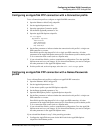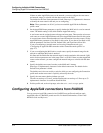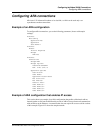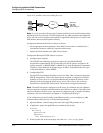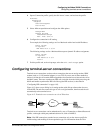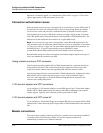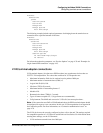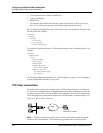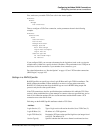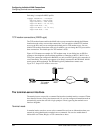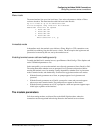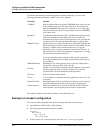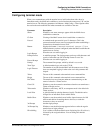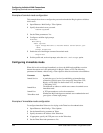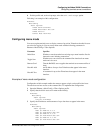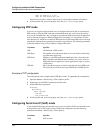
Configuring Individual WAN Connections
Configuring terminal-server connections
MAX 6000/3000 Network Configuration Guide 4-81
First, make sure you enable TCP-Clear calls in the Answer profile:
Ethernet
Answer
Encaps
TCP-Clear=Yes
Then, to configure a TCP-Clear connection, set the parameters shown in the following
example:
Ethernet
Connections
louie
Station=louie
Active=Yes
Encaps=TCP-Clear
Encaps Options
Recv PW=localpw
Login Host=techpubs
Login Port=23
Session Options
TS Idle Mode=Input
TS Idle=60
If you configure DNS, you can enter a hostname for the Login host (such as the techpubs
example above). Otherwise, specify the host’s IP address. The port number is the TCP port on
the host to use for the connection. A port number of zero means any port.
For related information, see “Session Options” on page 4-35 and “TCP-modem connections
(DNIS Login)” on page 4-82.
Settings in a RADIUS profile
RADIUS profiles can specify up to four Login-IP-Host and Login-TCP-Port attributes. The
MAX validates the number of these attributes in an Access-Accept packet returned by
RADIUS. If it finds more than four, the MAX logs an error in RADIF debug output and
processes only the first four specifications.
If the TCP connection to the first specified host/port combination fails while the TCP-Clear
session is being established, the system attempts to connect to the next specified host, and so
forth. If all connection attempts fail, the session terminates and the MAX returns a TCP
connection error to the dial-in client.
Following are the RADIUS profile attributes related to TCP-Clear:
Attribute Value
Login-Service (15) Type of login service allowed to the caller. Set to TCP-Clear (2).
Login-IP-Host (14) IP address of a TCP login host.
Login-TCP-Port (16) Destination TCP port on the specified login host (an integer from 1
to 65535). The default is 23.
Service-Type (6) Specifies whether the link can use framed or unframed services.



